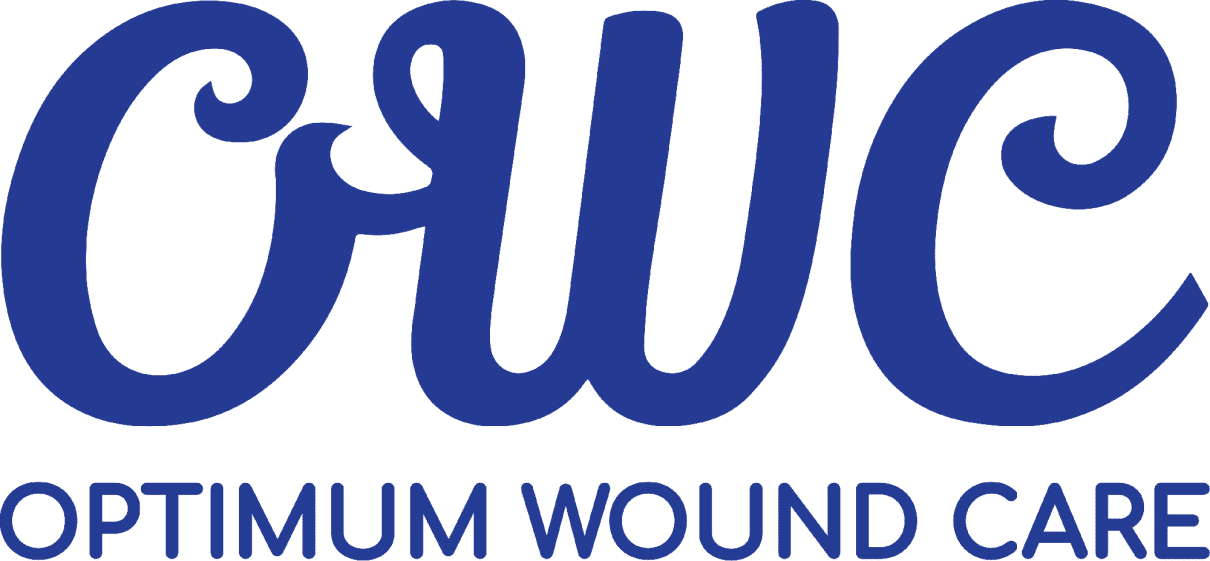- February 27, 2023
- By: Optimum Wound care
- No Comments
Advanced Wound Care
Advanced Wound Dressing
Wound dressing is more than using gauze or a cotton swab and antiseptics. In the last few years, the science of effective dressing has evolved significantly. Moreover, researchers now know that one size does not fit all. Every wound is unique and requires different kinds of an advanced wound dressing. For example, there are epithelializing wounds, granulating wounds, wounds with slough present, wounds with necrotic tissue, and more. Hence, only proper assessment by a specialist and the application of specific advanced wound dressing can ensure healing.
Advanced wound dressings can come in many forms, such as films, foams, hydrocolloids, hydrogels, and alginates. Each type of dressing has unique properties that can be beneficial for different types of wounds. For example, hydrogels are typically used for wounds that are dry or have minimal drainage, while alginates are often used for wounds with moderate to heavy drainage. Advanced wound dressings can provide many benefits for individuals with complex or chronic wounds, such as pressure injuries, diabetic foot ulcers, and venous leg ulcers.
Ankle Brachial Index (ABI)
The Ankle Brachial Index (ABI) is a non-invasive diagnostic tool used to evaluate the perfusion or blood flow to the lower limbs. It is measured by comparing the blood pressure in the ankle to the blood pressure in the arm. An ABI test result of 0.9 to 1.4 indicates normal blood flow, while a result of less than 0.9 suggests peripheral arterial disease (PAD), and a result of less than 0.5 suggests severe PAD.
ABI testing helps diagnose and manage vascular ulcers and wounds caused by impaired circulation. Patients with PAD have a higher risk of developing vascular ulcers, and ABI testing can help identify individuals who require aggressive treatment to prevent the development of these wounds.
In addition to vascular ulcers, ABI testing is also important in diagnosing and managing diabetic foot ulcers, which are caused by neuropathy and peripheral vascular disease. Individuals with diabetes have a high risk of developing foot ulcers, and those with PAD have a much higher risk. ABI testing can help identify individuals with PAD, allowing healthcare providers to implement a comprehensive care plan that includes aggressive treatment of PAD and strict foot care to prevent the development of diabetic foot ulcers.
Debridement
If you are living with a poorly healing wound, debridement may be one of the ways to promote faster healing. It is a way of preparing a wound for re-epithelization or regrowth of the tissues. It appears that chronic wounds fail to heal due to the presence of dead tissues that promote microbial growth. Moreover, the presence of dead tissues makes dressings and systemic antibiotic therapy less effective. These necrotic tissues also prevent the formation of normal or healthy tissues.
Debridement is done to remove dead tissues serving as a source of infection. Remove location infection to reduce the bacterial burden and minimize the chances of antibiotic resistance. Further, the removal of the tissues surgically seems to stimulate the wound bed and promote healing. It also helps prepare for skin flap or graft. Thus, if you are living with a poorly healing wound or ulcer, debridement may help.
Negative Pressure Wound Therapy (NPWT)
Negative Pressure Wound Therapy (NPWT) Or Wound V.A.C is a specialized wound care treatment that involves the application of a vacuum dressing to a wound. The vacuum draws fluid and debris from the wound, reduces edema, and promotes the growth of new tissue. NPWT effectively treats a wide range of wounds, including surgical, chronic, and traumatic injuries.
NPWT is particularly useful for individuals with large or complex wounds that are not healing well with standard wound care treatments. It can also be beneficial for individuals with wounds at high risk of infection or requiring additional support for healing. NPWT can be used in inpatient and outpatient settings and can be tailored to meet the individual’s specific wound care needs. While NPWT is generally considered safe and effective, it is essential to consult a healthcare provider to determine if it is appropriate for a particular individual and wound type.




